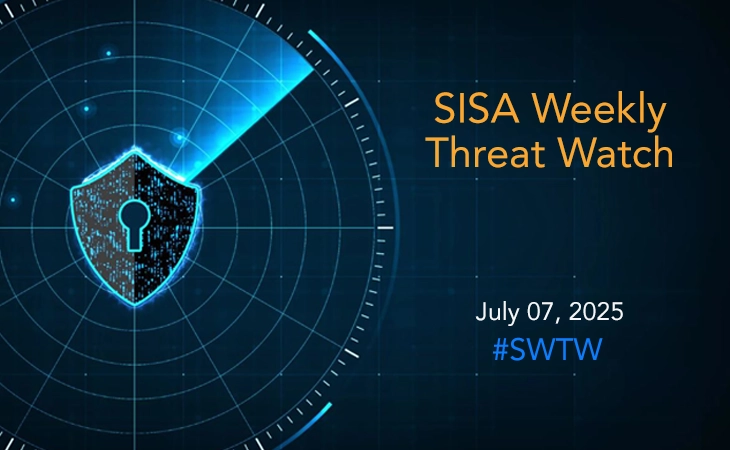

How can an enterprise meet data privacy needs with automated data discovery and classification
In a digitally-driven world, data is the most valuable asset for an organization, and it needs to be protected at all costs. Data discovery and classification act as a foundation for data privacy and security strategy. Both the functions together serve the purpose of enhancing data visibility, analysis, categorization, and remediation.
The volume of data collected by the organizations is increasing at a record pace every year. The International Data Corporation (IDC) estimates that by 2025, the worldwide data will grow to 175 zettabytes with as much of the data residing in the cloud as in data centers1. In addition to that about 66% (5.3 billion) of the world’s population will have access to the internet in 2023 a number up from 51% (3.9 billion) in 20182. On top of it, the developments across countries to secure their citizens’ data has brought in a global evolution of personal data protection and privacy laws. Maintaining visibility and control over the data collected, stored, and processed needs to be the top priority for any organization to protect itself from the risks of data exposure and breaches.
But protecting the data from such risks comes with its challenges. With the exponential growth of data, it becomes complex to understand its origin, value, purpose, and sensitivity. In addition to that, poor access management may lead to sensitive information ending up in the wrong hands without adequate precautions in place.
What puts data at risk?
- Lack of visibility: Organizations cannot keep their data private, confidential, or free from harm if they are not aware of its existence due to the fluidity of the data environment. Such dark data might be worthless for organizations but could be good enough to put their customers’ sensitive information at risk.
- Unauthorized access: Misconfigured authentication mechanisms over-expose the data and provide easy access to unauthorized parties. Due to this challenge, many regulatory compliances have come up with norms centered solely around unauthorized access.
- Human error: Lack of awareness within the organization or inadequate training for the staff leads to employees falling prey to phishing emails or using weak passwords. Attackers often target such vulnerable systems to get access to other more secure systems where sensitive data may exist.
International Data Privacy Laws – Regulating the processing of personal data
In a digitally-driven world, data is the most valuable asset for an organization, and it needs to be protected at all costs. Increased use of technology and growing visibility into evolving cyber threats have led to an ever-changing landscape for data security and privacy.
Data privacy focuses on defining the organizational practices and policies that ensure the use of customer data for the intended purpose only. It also gives the customer the right to have control over the collection and usage of their personal data.
To regulate and secure the processes of organizations that deal with personal data, global regulators and governing bodies have enforced various data protection laws that highly prioritize data privacy. Some of the prominent among them are:
- GDPR – The General Data Protection Regulation of the European Union protects the data privacy rights of citizens of the EU and applies to any global organization that processes their personal data.
- CCPA – The California Consumer Privacy Act is a one-of-a-kind comprehensive law in the United States that is designed to protect personal data of Californian citizens and gives them complete control over its usage.
- HIPAA – The Health Insurance Portability and Accountability Act regulates the processing of Patient Health Information (PHI) and mandates the necessary implementation of administrative, technical and physical safeguards to protect it.
- PDPA – The Personal Data Protection Act of Singapore governs the collection, use, and disclosure of personal data such that it recognizes both the consumers’ right to privacy and the purpose of collection by the organization.
- PIPEDA – The Personal Information Protection Electronic Documents Act in Canada protects the personal data of citizens processed by private sector organizations for commercial use.
How do automated data discovery and classification help?
Data discovery and classification act as a foundation for data privacy and security strategy. Both the functions together serve the purpose of enhancing data visibility, analysis, categorization, and remediation. But manual implementation of such practices, especially in larger organizations that deal with personal data on a global level, is a tedious task that is generally prone to errors, as well as extremely time-consuming.
Automated data discovery and classification help better understand the context of data, increase the accuracy of identifying sensitive data, and effectively protect it. Automation software or tools inculcate both the standards of regulatory compliance and the policies derived by the organization to safeguard sensitive data and access controls.
Data Discovery
Intelligent data discovery tools help scan varied targets ranging from endpoints, network servers, and hosts to databases, web applications, and storage files to identify the sensitive data. These tools also make it quick and easy to analyze the data stored in various file formats such as text, spreadsheet, images, audio, PDFs, etc.
Automated tools search for the places where the data lives whether in structured, semi-structured, or unstructured format across the organization’s network and cloud. Tools integrated with artificial intelligence and machine learning technologies help combat the challenges faced by security teams to constantly monitor the dynamic environments in search of sensitive information.
Data Classification
Followed by the data discovery process, data classification identifies the type within the discovered data to categorize it based on the set keywords, patterns, and labels. Data classification tools help link one piece of data to another to fulfill the organization’s need to process different data sets for different purposes.
Automated data classification tools also overcome the limitations posed by manual processes such as inconsistent or inaccurate classification of data by multiple employees. Such tools help save time and effort that security teams may put to manually classify the datasets as well as eliminate the chances of human error. With accurate data classification, organizations can take quick remediation actions of masking, truncating, or deleting the data to maintain data privacy for their customers.
Characteristics of an effective data discovery and classification tool
With traditional data discovery methods not serving the needs of organizations in today’s data-driven world, automation has become more of a necessity than an option. Data discovery, being one of the most effective solutions to stay one step ahead of the data security risks, is now a basic requirement for organizations to effectively manage the growing data and meet compliance needs. In addition to being flexible, less time-consuming, and user-friendly, some advanced features of a data discovery tool are essential to determine its effectiveness.
- AI and ML integration for efficient monitoring, enhanced data visualization, and high accuracy.
- Visibility across on-premises, cloud, and hybrid environments for a 360° view over enterprise networks and assets.
- Integration with Data Loss Prevention (DLP) solution to automate file access management and prevent data breaches.
- Compatibility with all major operating systems, databases, cloud systems, and other configurations for improved analysis.
- Integration with SIEM solutions to correlate and analyze data sets in real-time.
- A remediation interface to reduce the data risks and maintain the data retention policies.
- Ability to scan, classify and label sensitive data with customized categories to manage contextual information with increased efficiency.
Benefits of implementing data discovery and classification within organizations
Data discovery and classification are among those essential components of developing a cybersecurity strategy that cannot be overlooked. These solutions provide visibility to organizations that help them drive the security and compliance efforts and effectively handle the data flowing across the organization’s networks. The advantages offered are manifold, that include:
- Improved data visibility: Data discovery enhances data visibility such that organizations can monitor and analyze the data to make more informed business decisions. It helps organizations understand the purpose of collecting data, its usage, and its flow. Data visibility makes it easy to define the classification criteria and recognize the security gaps to develop better policies.
- Meet compliance needs: Organizations that typically handle large amounts of sensitive data must adhere to multiple regulatory compliances. Data discovery and classification help identify and categorize data that is subject to data regulations such as PHI and PCI to take appropriate remediation steps and meet the compliance requirements. It enables organizations to maintain a data retention policy and outline the purpose of processing personal data.
- Enhanced data security: Data discovery and classification also save organizations from financial and reputational damage by protecting sensitive data from potential data breaches. With a complete view of their data assets, their locations, and availability, organizations can quickly detect any abnormalities in the system and contain them with reduced data loss.
The right data discovery and classification tool not only helps streamline sensitive data management but also drives innovation and enhances compliance and risk management. Implementation of such tools also determines the organization’s commitment to protecting sensitive data and building customer trust.
For organizations facing challenges with sensitive data discovery and management, SISA Radar – SISA’s proprietary data discovery and classification platform, offers an end-to-end data solution to ensure the confidentiality, integrity, and security of sensitive data. SISA Radar’s forensics-based approach helps you to discover and secure sensitive data that the attackers target most, and classify, encrypt, and manage your data to prepare you to face any data security challenges. With the ability to scan more than 500 file types in both remote and corporate systems, SISA Radar safeguards sensitive data from unauthorized access, helps organizations navigate through the ever-changing risk landscape and remain compliant.
References:
- https://www.networkworld.com/article/3325397/idc-expect-175-zettabytes-of-data-worldwide-by-2025.html
- https://www.cisco.com/c/en/us/solutions/collateral/executive-perspectives/annual-internet-report/white-paper-c11-741490.html
Latest
Blogs
Whitepapers
Monthly Threat Brief
Customer Success Stories

SISA is a Leader in Cybersecurity Solutions for the Digital Payment Industry. As a Global Payment Forensic Investigator of the PCI Security Standards Council, we leverage forensics insights into preventive, detective, and corrective security solutions, protecting 1,000+ organizations across 40+ countries from evolving cyberthreats.
Our suite of solutions from AI-driven compliance, advanced security testing, agentic detection/ response and learner focused-training has been honored with prestigious awards, including from Financial Express, DSCI-NASSCOM and The Economic Times.
With commitment to innovation, and pioneering advancements in Quantum Security, Hardware Security, and Cybersecurity for AI, SISA is shaping the future of cybersecurity through cutting-edge forensics research.
Company
Resources
Quick Links
Copyright © 2025 SISA. All Rights Reserved.
 USA
USA India
India APAC
APAC Middle East
Middle East Global
Global





 Facebook
Facebook Linkedin
Linkedin  X
X Youtube
Youtube





